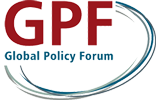
Land grabbing is widely assumed to be happening only in the global South, but in-depth analysis by a team of researchers shows that land grabbing is also creeping in Europe. The report, involving 25 authors from 11 countries, reveals the hidden scandal of how a few big private business entities have gained control of ever-greater areas of European land. It exposes how these land elites have been actively supported by a huge injection of public funds – at a time when all other public funding is being subjected to massive cuts. While some of these processes – in particular ever-increasing land concentration -- are not new, they have accelerated in recent decades in particular in Eastern Europe. They have also paved the way for a new sector of foreign and domestic actors to emerge on the European stage, many tied into increasingly global commodity chains, and all looking to profit from the increasingly speculative commodity of land.
[…]
• Land ownership in Europe has become highly unequal reaching, in some countries, proportions similar to Brazil, Colombia and the Philippines – all notorious for their unequal distribution of land and land-based wealth. While in the EU there are some 12 million farms, the large farms (100 hectares and above) that only represent 3 percent of the total number of farms, control 50 percent of all farmed land.
• This concentration of land ownership started decades ago, but has accelerated.3 In Germany, for example, a total of 1,246,000 holdings in 1966/67 shrunk to just 299,100 farms by 2010. Of these holdings, the land area covered by farms of less than 2 hectares, shrunk from 123,670 hectares in 1990 to a mere 20,110 hectares in 2007, while farms of 50 hectares and larger expanded in area from 9.2 million hectares in 1990 to 12.6 million hectares in 2007. 4
• In Eastern Europe, the concentration of land ownership has been particularly marked since the collapse of the Berlin Wall. Many farmers were bankrupted when their countries entered the EU and highly subsidised agricultural products began flooding their markets. In the first six years, the majority of small farmers were not even eligible to apply for EU agricultural subsidies which fuelled sales of farms. Here a new elite group of speculators/investors have succeeded in capturing vast tracts of land.
• Public money, through subsidies paid under the Common Agricultural Policy, supported this concentration of land and wealth. In Italy, for example, in 2011, 0.29 percent of farms accessed 18 percent of total CAP incentives, and 0.0001 of these (that is 150 farms) cornered 6 percent of all subsidies. In Spain in 2009, 75 percent of the subsidies were cornered by only 16 percent of the largest farmers. In Hungary in 2009, 8.6 percent of farms cornered 72 percent of all agricultural subsidies. Currently, the CAP subsidy scheme is being changed to subsidies per hectare of farm land. Unintended consequences of this might be that it further fuels the European land grab in the Eastern and Mediterranean parts of Europe, as it will marginalise small farms, and continue to block entry by prospective farmers.
